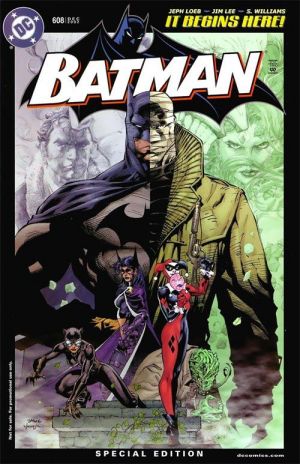Comics /
Spotlight
Justice League #1: A Study of Spectacle and Storytelling
By Dan Horn
September 2, 2011 - 10:03
I was in high school when
Batman #608 was released, and at that time monthly comics had seemed to me to have lost all of their sheen. The only comic from the big two that I was following in earnest was Garth Ennis'
Punisher, which could hardly be considered mainstream. I was neither following niche titles to be cool (I was the only kid I knew who still read comics) nor to make some sort of pseudo-hipster statement about my Bohemian tastes in sequential art forms. I'd simply had enough of Marvel and DC's predominant formulae. There was no allure.
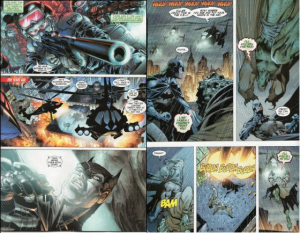 |
| Can you tell which page is from Justice League and which is from Batman? |
I'd been lost before "No Man's Land" and never cared to climb aboard again. Call me cynical, even at an early age, but I knew those massive crossovers were just marketing ploys, which I couldn't afford to follow anyway. I was working at a water ice stand in the Philly suburbs, making only enough money for Saturday night dates, gas for my Dodge Shadow, and a small, and subsequently exclusive, stack of comics. I couldn't be bothered with event books that seemed only to be trying to bankrupt the low-income fan-base of comics and graphic novels. So, I drifted happily in the well-written obscurity of independent or abstracted comic books. Then, in 2002, something caught my eye. It was
Batman #608; "Hush, Chapter One: The Ransom."
 |
| Where's James Vanderbeek? "I don't want... your life." (Some more hackneyed panels from JL#1) |
If we take a look back at Jeph Loeb and Jim Lee's "Hush," which bears a few striking similarities to this week's
Justice League #1, we see where its strengths carried it even through the plot holes and contrivances. "Hush" was an imbalance of spectacle and storytelling, where Loeb's script merely subsisted as a serviceable framework for Jim Lee's stunning artwork. That's not to say Loeb's little Bat-family travelogue was without its own merit, however. In fact, it was Loeb's flexible and entertaining, if a bit shallow, premise that lent a good dose of bravado to the already formidable spectacle that was "Hush." You see, Jeph's writing didn't have to be great, or even plausible; it just needed to have the legs to carry the extravaganza that was Jim Lee's artistry, and of course it did. I was hooked immediately, and my faith in DC comics was renewed.
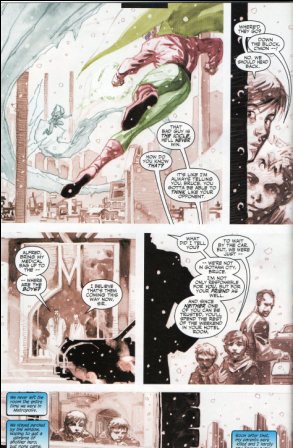 |
| "Hush" even found an ingenious way of introducing Golden Age continuity. Even new readers could appreciate this. |
"Hush" became the recipe for the monthly comic blockbuster: brilliant artwork, convoluted mystery, a cool new villain (one that's now permanently ingrained in the Batman mythos), and a self-contained story with enough cameos to afford the reader the benefit of feeling as if he's accumulated all of a massive crossover's tie-ins in twelve neat issues. "Hush" was far from perfect, but it was always what it was meant to be: a jumping-on point; an exhibition; a talent showcase; a phenomenon.
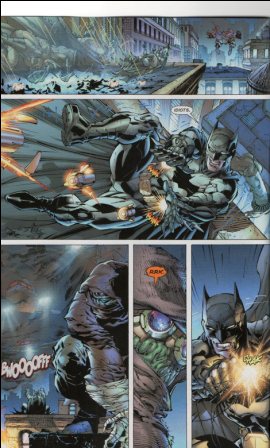 |
| That you Croc? |
After reading
Justice League #1, I dug through my
Batman back-issues to find Loeb and Lee's run. I wanted to make sure I wasn't just feeling extremely jaded. I wanted to see if Jim Lee's panels could still spark some sort of excitement in my indifferent heart. I'm happy to report that I'm not desensitized to Lee's work. His interiors on "Hush" are still just as incredible as they were in 2002 and 2003. So, what's the difference between those interiors and
JL #1's interiors? The answer is more than a stylistic shift, but it's just as simple: a lack of dynamic storytelling.
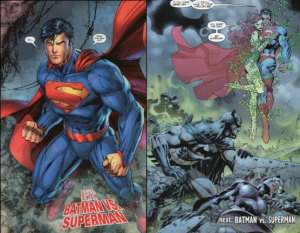 |
| Check out this bold new direction in which we've been taken dozens of times previously! |
Jeph Loeb seemed to have a crucial understanding back then of the
symbiosis between spectacle and script in comic books. The objective for
a writer of a blockbuster is to give his artistic team some really
fantastic stuff to riff off of. The story needs to be layered (that
doesn't mean awkwardly jamming in high school football games for lack of
anything else to fill your first issue), it needs to have a fluid pace,
and it needs above all else an equity of character-study and adventure.
These are all things that either felt forced and concurrently poorly
scripted in Johns' Justice League debut, or they had been ignored
entirely, to speak nothing of the myriad other problems plaguing this
issue (read
here and
here for more on that, though you can find a positive review of JL #1
here). So, Jim
Lee was sort of left trying to recapture his own lightning in this new
bottle, and the results really speak for themselves.
It's a lackluster
start for something DiDio and company were swearing was going to blow
our minds and wipe away all of our doubts about the New 52. And is it
me, or is it aggravating to other readers to feel like I'm reading
something that's pandering to some other readership demographic
entirely? I know who Batman and Green Lantern are. Rediscovering who
they are in this book wasn't interesting. It didn't feel like a "Secret Origin" book. There wasn't anything outstandingly different about these characters to make an interesting retelling for established readership. And how were women, who were excited about DC's posited diversity, supposed to connect to this issue? There were absolutely no female leads (and barely even any female extras) for them to connect to! To think, all DC had to do was follow
their very own tried and true formula for success... *sigh*.
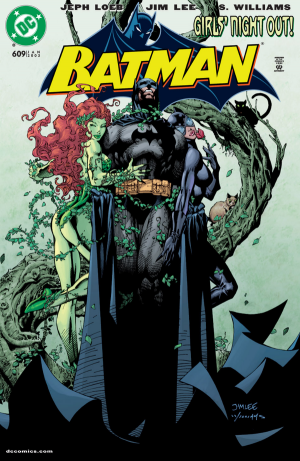 |
| From Oracle to Catwoman, and from Huntress to Ivy, "Hush" had no shortage of strong female leads from the very beginning. |
Last Updated: March 3, 2025 - 20:40
